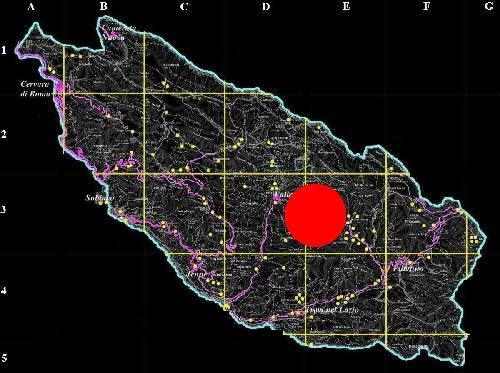
num. 7-12 dicembre 2009
 |
 |
Conclusioni - Conclusions

Questo contributo alla conoscenza della malacofauna dei monti Simbruini è parte di una più ampia ricerca relativa a tutta la regione Lazio. Il suo scopo è essenzialmente rivolto all'individuazione delle specie presenti nella zona: quindi un "censimento". Le ricerche sono state condotte in pochi mesi e quindi è più opportuno parlare di "contributo". Durante la stesura di questo numero della rivista Argonauta sono state condotte altre ricerche e individuate altre specie: quindi non si può mettere fine a questa indagine che proseguirà in altre sedi. Le poche pagine di statistiche hanno il solo scopo di chiarire la qualità e la quantità del lavoro svolto e la sua compatibilità con gli impegni presi con l'Ente Parco. Sono stati raccolti pochissimi esemplari, quindi ricerca non "invasiva". Sono stati raccolti solo esemplari morti mentre i vivi sono stati fotografati anche se di micro dimensioni. Sono state effettuate ricerche equamente distribuite sul territorio anche dove la viabilità non è sempre presente e sulle cime spesso non facilmente raggiungibili. Non è stata esaminata la zona a "tutela integrale" indicata sulla mappa dal cerchio rosso. Non sono state condotte ricerche nei periodi di "ibernazione" dei molluschi (ottobre-marzo) e di "estivazione" (seconda metà luglio - prima metà agosto). Sono stati registrati circa 45.000 dati in un database di Microsoft Access appositamente realizzato dall'Associazione "Verde Realtà". I materiali raccolti vanno a far parte delle Collezioni Museali della Società Romana di Scienze Naturali mentre tutti i dati restano a disposizione di quanti ne faranno richiesta. Il contenuto di questo numero della rivista Argonauta sarà messo a disposizione dell' Ente Parco per le sue finalità istituzionali |
This contribution to the knowledge of the malacofauna of the Simbruini mountains is part of an ampler research related to the whole Lazio region which aims essentially to the discovery of present species in the zone and later to a "census". The research has been conducted in a few months and therefore it is more appropriate to call it a "contribution". During the draft of this issue of the magazine Argonaut, more research has been conducted and more species have been located; therefore we cannot put an end to this investigation, which will continue elsewhere. The few pages of statistics have the only purpose of clarifying the quality and quantity of the work completed and its compatibility with the commitments made with the Ente Parco. Since very few samples have been gathered, the research is not to be considered "invasive". Only dead specimens have been gathered, while the live ones have been photographed even if of micro dimensions. The research performed has been equally distributed throughout the territory, even where the viability is not always present and on peaks often not easily reachable. The zone of "integral guardianship", marked on the map by a red circle, has not been examined. No research has been conducted during the period of "hibernation" of the molluscs (October-March) and of "summerization" (second half of July - first half of August). Around 45,000 entries have been recorded in a Microsoft Access database created for this purpose by the association Verde Realtà. The selected materials belong to the Museum Collections of the Società Romana di Scienze Naturali while all data remain at the disposal of whoever requests its use. The content of this number of the magazine Argonaut will be made available to the Ente Parco for its institutional purpose. |
